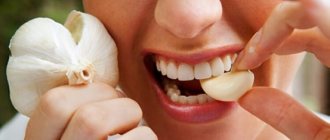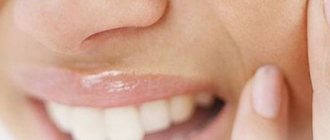What happens when you get hurt
Many people mistakenly consider a bruise to be a harmless injury. In fact, it can be dangerous, especially if it affects internal organs.
A bruise is damage to soft tissues without significant destruction of their structure. In this case, the vessels burst, from which fluid is released into the interstitial space, where it accumulates.
Based on the degree of tissue damage, there are:
- Minor damage that goes away on its own.
- Bruised muscle tissue with hematoma and swelling, very painful.
- High probability of tendon damage.
- Contusion of internal organs with severe swelling and severe pain.
If you suspect a bruise, you need to make sure that there is no fracture, so you need to contact a traumatologist.
Material and methods
A pilot prospective comparative study was conducted, which included 54 patients with soft tissue contusion of the shoulder (n=27) and hip (n=27). Bruises in all patients were characterized by the formation of subcutaneous or intradermal hemorrhage, swelling of soft tissues without muscle damage. Inclusion criteria
: age 25–50 years, compensated comorbid pathology.
Non-inclusion criteria
: decompensated concomitant pathology or requiring constant medical support; severe soft tissue damage; the injury is more than 1 day old; self-administration of analgesics and other medications for pain relief before the initial visit. All patients signed informed consent to participate in the study.
During the initial examination, all patients underwent an ultrasound examination of the injury site to exclude more severe pathology. Soft tissue swelling was assessed at each visit using the circumference of the injured limb segment, measured in the upper, middle, and lower thirds, and compared with the uninjured limb. Functional recovery was assessed by the patient's ability to flex the elbow and shoulder joint and squat at least 10 times, as well as hold a 2.5 kg load for more than 2 minutes in an outstretched arm.
Depending on the form of the drugs received, patients were divided into 8 groups. Group 1 (n=6) - patients with upper limb injuries who received ketoprofen tablets (Ketonal®) at a dosage of 100 mg once a day; Group 2 - patients with damage to the upper limb (n=6) who received diclofenac tablets at a daily dosage of 100 mg; Group 3 (n=7) - patients with damage to the lower extremity who received ketoprofen tablets at a dosage of 100 mg once a day; Group 4 (n=7) - patients with lower limb injuries who received diclofenac tablets at a dosage of 100 mg; Group 5 (n=7) - patients with injuries to the upper limb, for whose supervision they used the injection form of ketoprofen at a daily dosage of 100 mg; Group 6 (n=7) - patients with injuries to the upper limb, in whose treatment an injectable form of diclofenac 100 mg was used; Group 7 (n=7) - patients with injuries to the lower limb who received ketoprofen by injection at a dose of 100 mg; Group 8 (n=7) - patients with injuries to the lower limb and the use of an injectable form of diclofenac.
In all patients, in addition to analgesic therapy, on the 1st day the injury site was immobilized with a tight bandage and cooling procedures were applied. At the second visit (on the 2nd day and daily thereafter), the intensity of pain was assessed according to VAS, and the severity of edema. Treatment and monitoring of patients was stopped when a stable analgesic effect was achieved (according to VAS), there was no increase in soft tissue edema, and limb function was restored.
Symptoms of bruise
It is not always possible to independently distinguish a bruise from a closed fracture. It is believed that with mild injury, the pain becomes less pronounced 2-3 hours after the injury. But in reality, it often happens that a fracture hardly bothers you, but a bruise causes a lot of unpleasant sensations even in the second and subsequent days.
Main symptoms of bruise:
- strong pain;
- internal or subcutaneous hemorrhage;
- edema;
- decreased mobility of the damaged area.
Bruising and swelling may appear immediately after injury or several hours later. Their severity depends on the depth of the lesion. The pain intensifies with pressure, and swelling sometimes increases for several days. Since the signs of a bruise and a fracture are similar, it is better to conduct an X-ray examination to ensure the integrity of the bones.
Physiotherapy
Magnetotherapy
Physiotherapeutic procedures are prescribed from 2-3 days to speed up blood circulation, resolve bruises and swelling. They help heal damaged tissues and reduce residual effects after a bruise. Apply:
- magnetic therapy - treatment with an alternating magnetic field reduces pain and swelling, improves tissue nutrition and blood flow, can be used on damaged skin starting from the second day;
- UHF - ultra-high-frequency waves have a deep warming and absorbing effect, indicated in the presence of seals;
- electrophoresis of drugs (Heparin, Iodine, Lidaza) helps quickly relieve swelling and eliminate skin hemorrhages, prevents post-traumatic inflammation;
- diadynamic therapy using a gentle method - currents with different wave amplitudes have a massaging effect and activate blood flow;
- ultrasound – ultrasonic waves stimulate blood movement, accelerate the restoration of damaged tissues, can be used with ointments (phonophoresis).
After relieving pain and inflammation, manual massage is used to improve the movement of blood and lymph. It is carried out not at the site of injury, but along the path of venous blood and lymphatic fluid. For example, for swelling of the face, the cervical-collar area is massaged. In case of traumatic brain injury, massage is contraindicated for the first month.
Treatment Options
The easiest way to help with a bruise is cold.
It is better to apply a wet cloth rather than ice to reduce the risk of a negative skin reaction to the effect. If you only have frozen items on hand, you should wrap them in a cloth or towel. Exposure to cold will not only reduce swelling, but also reduce the severity of pain. It is advisable to apply compresses every 2 hours, the duration of exposure is 5–10 minutes. It is not recommended to leave it for a long time, as negative reactions from the skin and blood vessels are possible.
Two types of ointments help speed up recovery: based on leech extract - SinyakOff, and with substances that correct microcirculation - Troxerutin. It is enough to apply them to the problem area 2 times a day for a noticeable effect. They improve blood circulation, which causes swelling to resolve faster.
A bruise may make it difficult for a person to move the injured part of the body. It is recommended to apply a bandage made of an elastic bandage in order to disturb the injured area less. The fixation should be tight, but not compress tissues and organs.
Read also: Leg pain: causes and treatment
How to relieve swelling after a bruise and prevent its development
To relieve swelling after a bruise and prevent its formation during injury, you need to apply cold. It's best to grab an ice pack or frozen food from the freezer. They are wrapped in a towel and held for 15 minutes, then removed and after half an hour the procedure is repeated. If there is no ice, use a wet towel or a heating pad filled with cold water.
If there was a bruise to a limb, then it is provided with rest and an elevated position. If movement is necessary, an elastic bandage is applied to the affected joint; it prevents active blood flow. A tight bandage inhibits the development of edema, but it can be used for no more than half an hour, as blood circulation is impaired.
If the face, head, or upper body are injured, a high pillow is placed while resting to ensure blood flow. If the injury was in the area of the coccyx, sacrum, or lower back, then you need to lie on your side or stomach. Abrasions or wounds are washed and treated with hydrogen peroxide before applying ice. The damaged skin is smeared with iodine or brilliant green and covered with a bandage, fixed with a bandage.
How to help from within
Help with serious bruises is needed not only externally, but also from the inside. It is not necessary to take medications so as not to put a strain on the liver. There are natural ways to support the body:
- rose hips, currants and citrus fruits are sources of vitamin C to strengthen blood vessels;
- cabbage, spinach - rich in vitamin K, which is necessary for normal blood clotting;
As a pharmacy vitamin, you can take Ascorutin. This is an inexpensive but effective way to strengthen blood vessels
Dear patients! Remember that only a qualified doctor can make an accurate diagnosis, determine the causes and nature of the disease, and prescribe effective treatment. You can make an appointment with our specialists or call a doctor at home by calling 8-(4822)-33-00-33
Be healthy and happy!
Consequences
Complications with bruises are quite possible. It all depends on the nature of the injury and which area of the face was damaged. Possible consequences include:
- Nerve damage. completion. This is quite dangerous, since it is not always possible to fully restore their functionality. This means that the affected part of the face may stop moving;
- Deterioration of vision. If the area around the eyes is bruised, there is also the possibility of damage to the nerve responsible for visual functions. Again, the outcome depends on the nature of the injuries. Both partial and complete loss of vision is possible, which is much less common;
- suppuration at the site of the bruise in the form of an abscess;
- bleeding that, if not treated immediately, may lead to fainting or shock;
- Cyst formation in the presence of hematomas.
In case of serious injuries, the bruise may be accompanied by a concussion, deformation of the bones of the nose or jaw. As a result, a person may later suffer from conditions such as sinusitis or sinusitis.
Prevention
Almost all of us have had bruises on the soft tissues of our faces in our lives. Unfortunately, this cannot be completely prevented. However, in order to at least minimize the risk, it is necessary to take basic precautions and safety measures. When it comes to children, it is important to teach them from an early age how to avoid traumatic situations.
If facial bruises do occur, do not leave it unattended and take appropriate measures. You can do this yourself or seek medical help.
Top 2 most effective ways to relieve swelling on the face
In addition to expensive cosmetic procedures and pharmaceutical products, there are 2 cheap ways to eliminate this problem.
Method 1
- The first and most common method is to apply raw potatoes to the bruise site.
- Lotions based on coltsfoot decoction. The decoction can be easily prepared in 5-8 minutes. You just need to throw a tablespoon of the dry plant into boiling water (250 ml) and leave to boil for another 3 minutes.
Attention: the lotions must be cold, so the broth must be placed in the refrigerator.
Method 2
- Iodine network. She copes well with tumors.
- Applying cabbage. One of the budget methods that really works.
- Compresses. To create them, you need to boil the beans, which are then mixed with honey and 50 g of butter. Read more information on removing puffiness from the face and eyes here.










